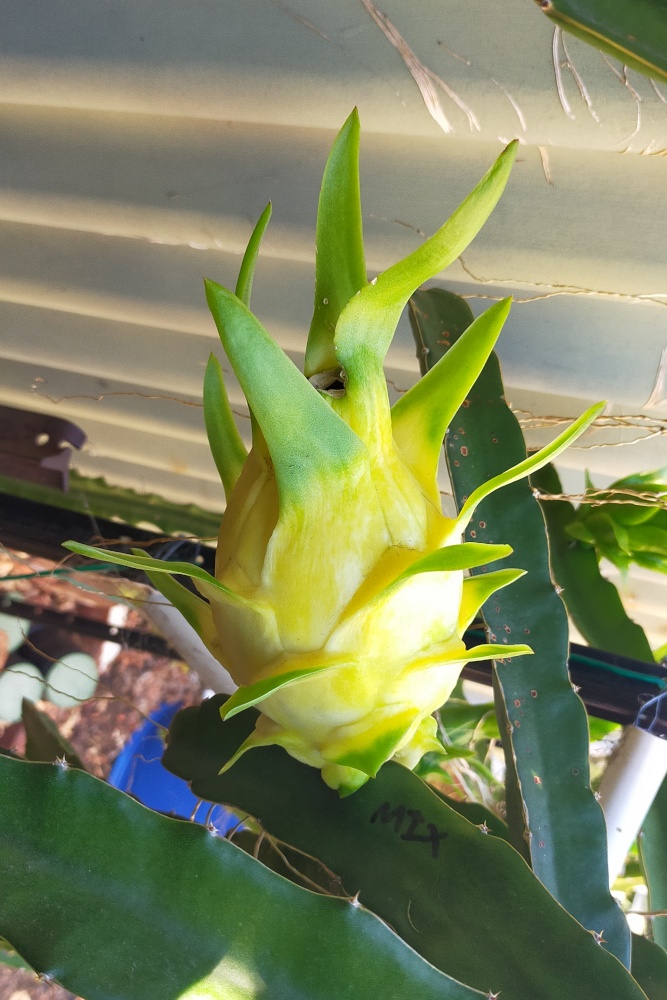Overview
Hylocereus undatus, cv. Aussie Gold
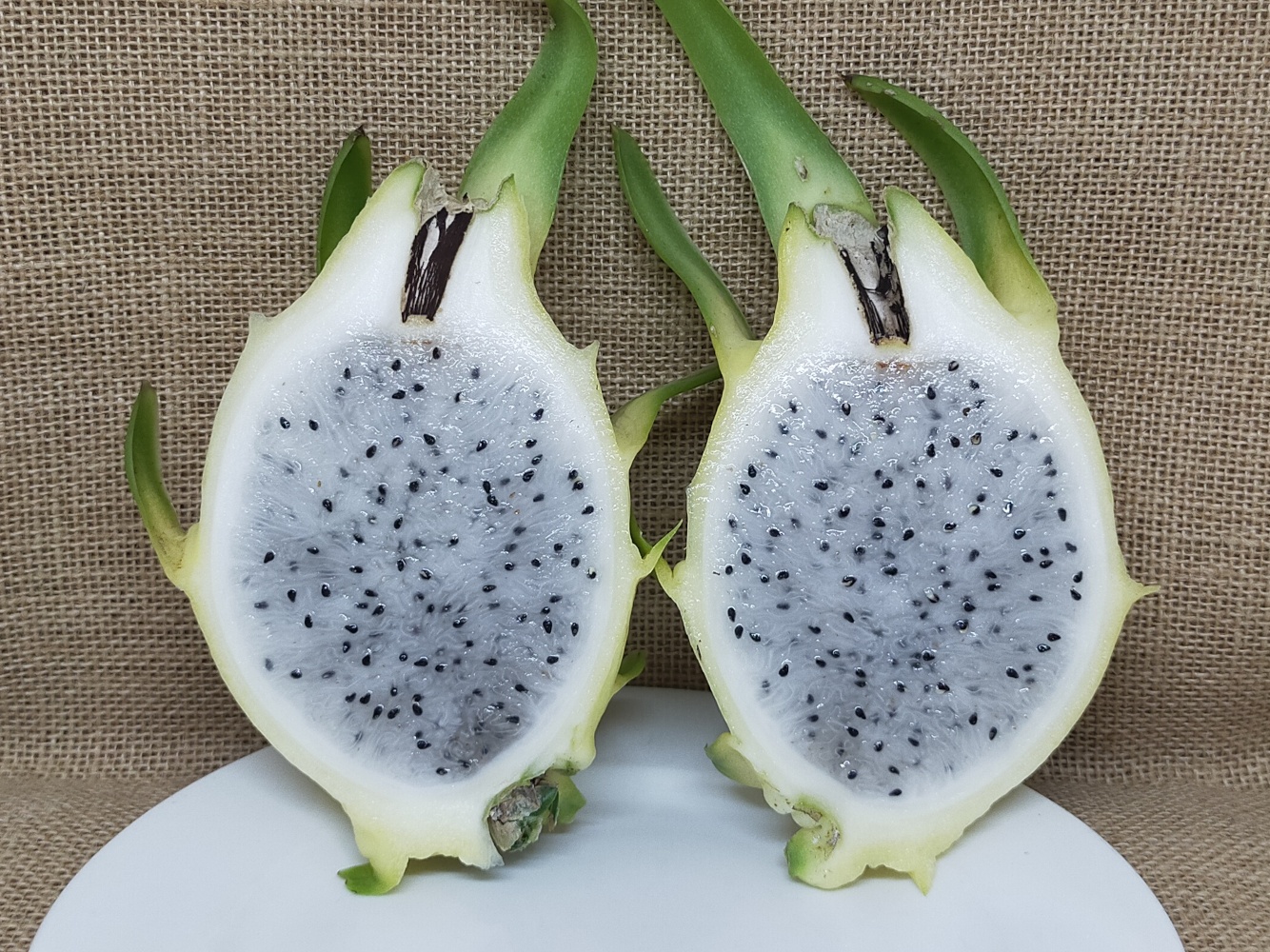
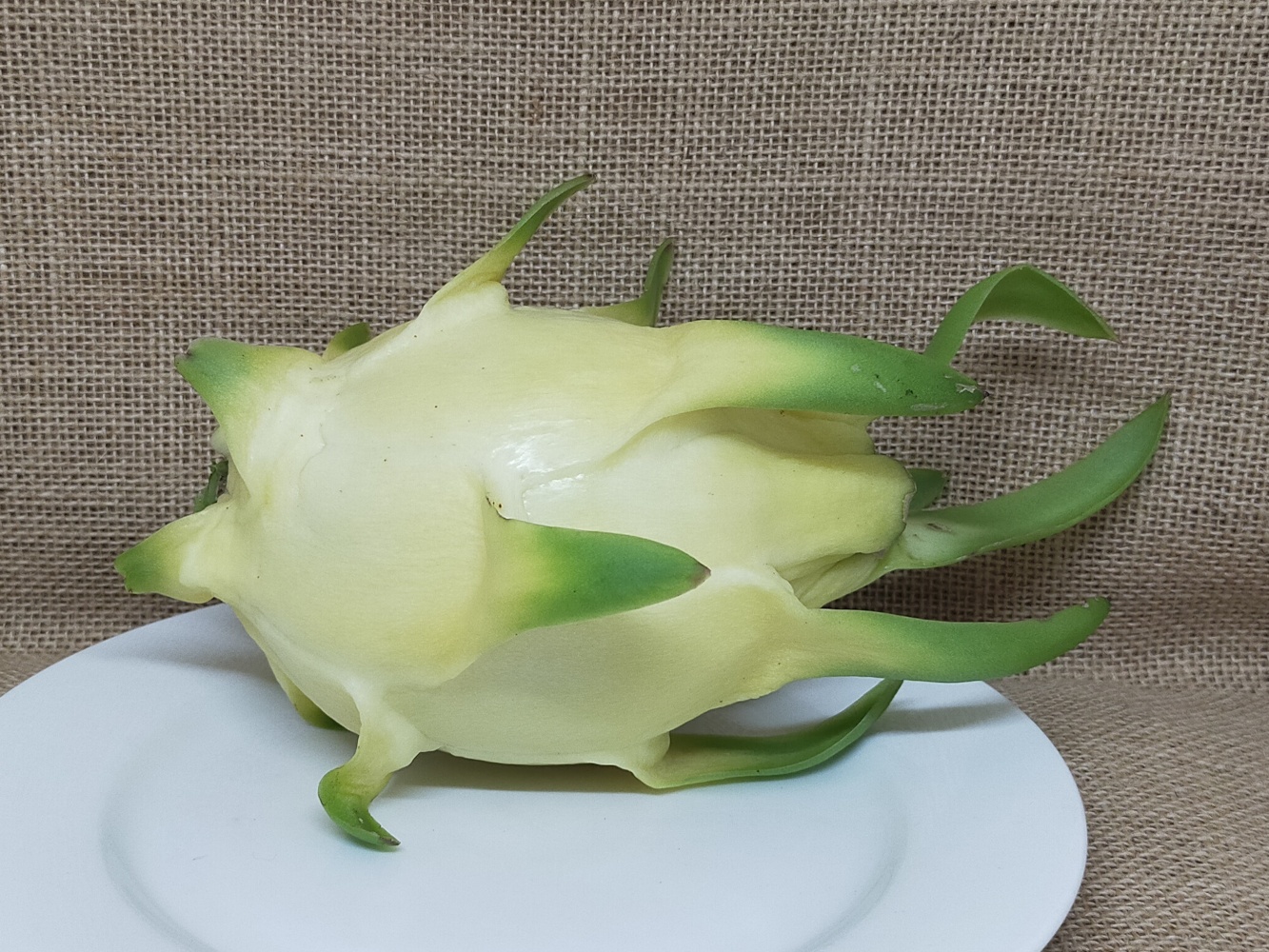
Other names: Isis Gold, Golden Yellow, Israeli Yellow
Pollination: self-fertile
This is one of the most visually stunning varieties in terms of fruit appearance, and everyone seems to want it despite it being self-sterile. This is the main drawback, along with it being perhaps a little sensitive to the heat and cold. I also find the plant to be rather good-looking with particularly thick stems and little ribbing. This variety of dragon fruit was first cultivated in Israel and is a variant of the typical pink-skinned, white-fleshed dragon fruit, Hylocereus undatus (see Vietnam White). As you might expect, it is most commonly referred to as “Aussie Gold” in Australia, bearing the same colours as Australia wears in the Olympics. There could be slight variations, however. All in all a great variety to with a unique (but good) taste.
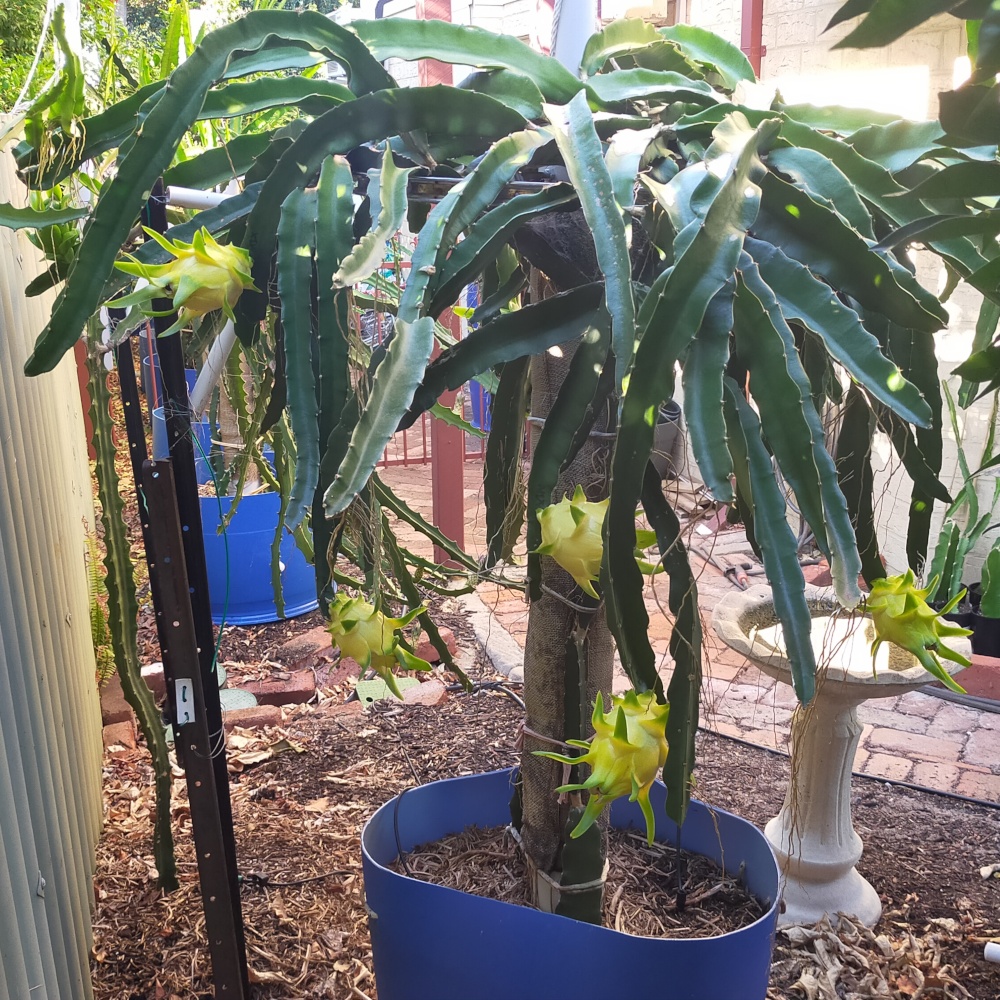
Buds
Buds are pretty standard and seem to appear late in the season, at least so far. They start off as a vibrant lime green with almost undetectable red tips, before becoming slightly darker in colour as they mature. You can just see the stigma poking through the tip of the flower as it begins to open, hinting at its self-sterile nature. This is interesting considering it is a variant of a self-fertile variety.


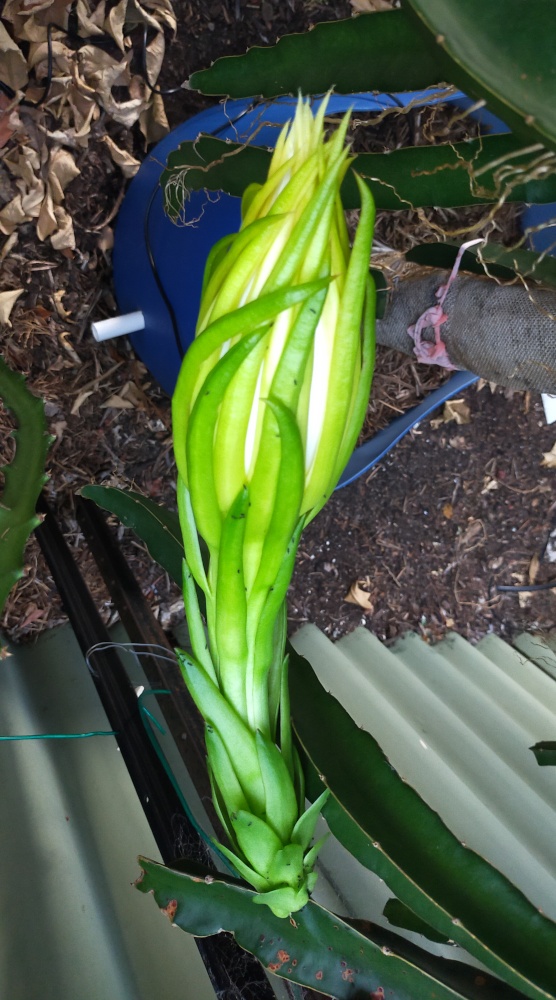
Flowers
Aussie Gold has quite a distinct flower with especially pointy petals. As you would expect, the stigma protrudes well away from the anthers, and you must use pollen from another variety. So far, I’ve only had pollen from red- and purple-fleshed varieties on hand at the time of flowering, and I have heard that Vietnam White is the ideal pollinator (which is strange considering how closely related they are). It will be interesting to see what effect different pollen has on fruit quality and size, as Aussie Gold is known to get up to 1 kg fruits.
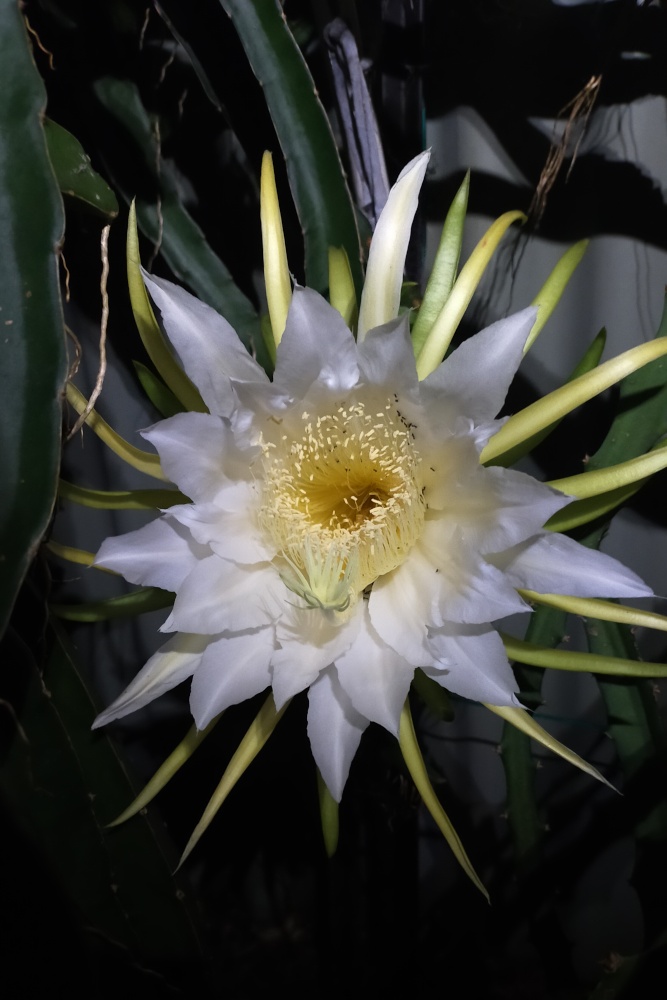
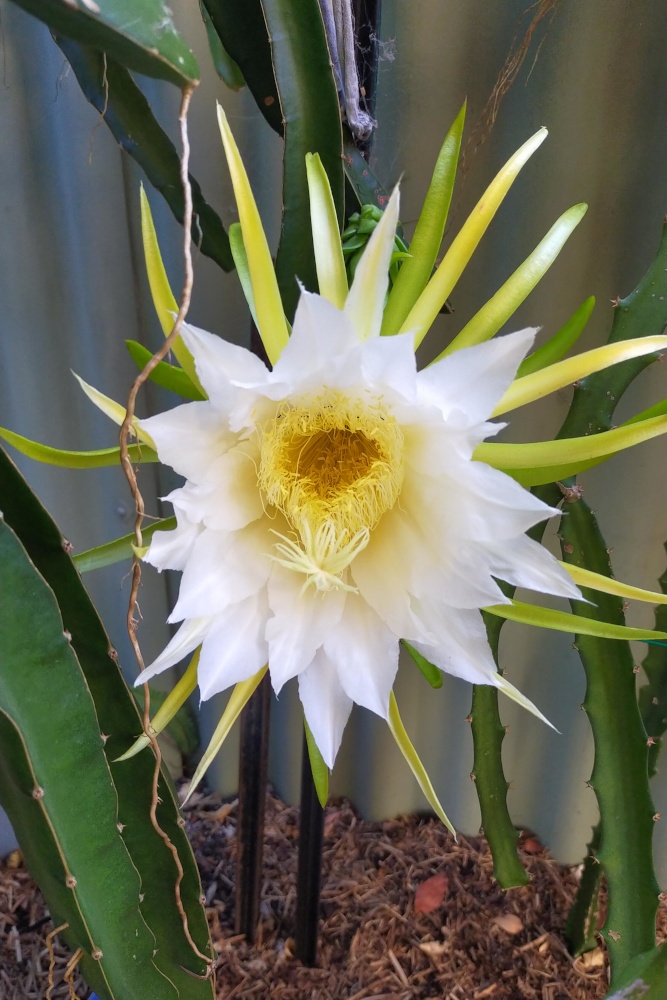
Fruit
The fruit is the real prize of this variety. That vibrant yellow colour just screams tropical, and you won’t be disappointed with the taste either. The best way I can describe it is like a mild lemonade, though not overwhelmingly sweet. It is a bit like combining the taste of Vietnam White with the taste of Yellow Colombiana, if you’ve had those varieties. I just get so excited seeing these huge yellow fruits out in the garden, and would definitely recommend adding it to your collection.

